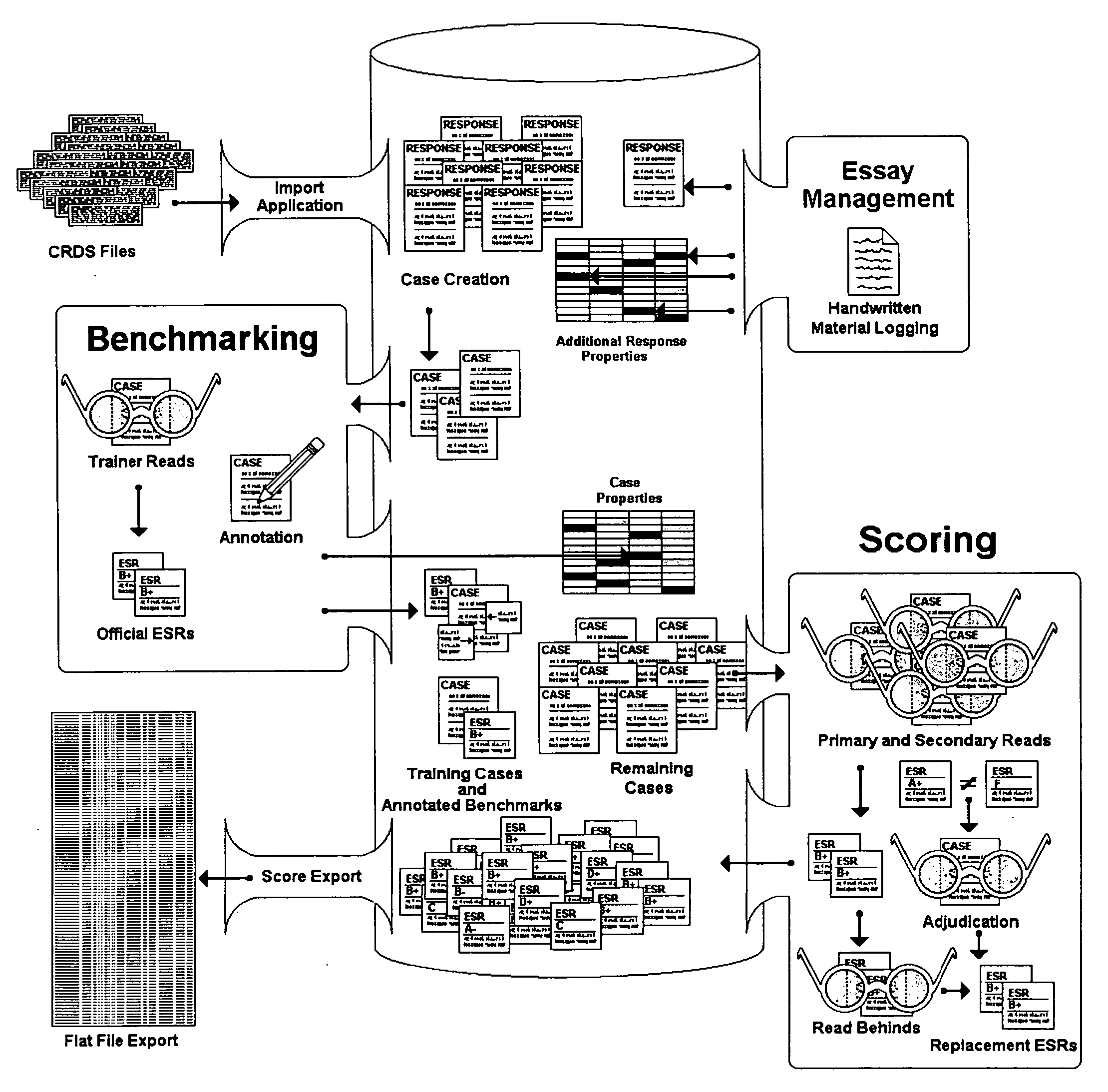Consolidated online assessment system
a consolidated and online assessment technology, applied in educational appliances, mechanical appliances, instruments, etc., can solve the problems of no distinction made, no categorization, no mechanism to enable such a distinction, etc., to reduce the number of touch points and handoffs, and increase the administrator's ability to track
- Summary
- Abstract
- Description
- Claims
- Application Information
AI Technical Summary
Benefits of technology
Problems solved by technology
Method used
Image
Examples
examples
[0087] Type I:
[0088]“All men are created equal”
[0089] Part A: Discuss the origin of this ideal
[0090] Part B: Discuss the problems of applying this ideal to constitutional governments
[0091] Type II:
[0092] Describe the process of photosynthesis.
[0093] Describe the process of natural selection.
[0094] Type IA and Type IIA Scoring
[0095] The DSU Hierarchy concept of the invention supports at least two other simple types of scoring. Relaxing the assumption that Prompts are associated with leaf levels of the DSU tree allows for a Prompt to have multiple DSUs (the prompt is associated with a DSU that has a set of sub DSUs). Semantically it means: “Here is a Prompt (or group of Prompts), and it is scored several different ways.” This somewhat describes analytical scoring where a response gets scored in several different categories. For example, an elementary school essay may receive a score for grammar, spelling, handwriting, etc. In the COLA System, these are separate DSUs, which crea...
PUM
 Login to View More
Login to View More Abstract
Description
Claims
Application Information
 Login to View More
Login to View More - R&D
- Intellectual Property
- Life Sciences
- Materials
- Tech Scout
- Unparalleled Data Quality
- Higher Quality Content
- 60% Fewer Hallucinations
Browse by: Latest US Patents, China's latest patents, Technical Efficacy Thesaurus, Application Domain, Technology Topic, Popular Technical Reports.
© 2025 PatSnap. All rights reserved.Legal|Privacy policy|Modern Slavery Act Transparency Statement|Sitemap|About US| Contact US: help@patsnap.com



